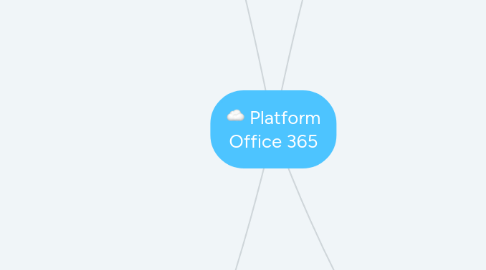
1. Organisational Impact
1.1. IT-organisation
1.1.1. Adoption
1.1.1.1. Training
1.1.1.2. Coaching
1.1.1.3. Community
1.1.2. Support
1.1.2.1. Central
1.1.2.1.1. Office 365 Center of Excellence, 3rd line support
1.1.2.2. De-central
1.2. Business
1.2.1. Adoption
1.2.1.1. Training
1.2.1.2. Coaching
1.2.1.3. Champions/Key users
1.2.1.4. Sandbox
1.2.1.4.1. Rules for Play
1.2.1.5. Community
1.2.2. Governance
1.2.2.1. Board members
1.2.2.1.1. Key users
1.2.2.1.2. CISO
1.2.2.1.3. Privacy Officer
1.2.2.1.4. Service Owner Office365
1.2.2.1.5. Architects
1.2.2.1.6. HR
1.2.2.1.7. Communication
1.2.2.2. Policies and Rules of use
1.2.2.2.1. Security/Compliance
1.2.2.2.2. Creation and disposal Sites/Teams/Mailbox/OneDrive
1.2.2.2.3. Which services
1.2.2.2.4. Roles and responsibilities
1.2.2.2.5. External users
1.2.2.2.6. User profiles and privacy
1.2.2.3. Roadmap
1.2.2.3.1. Services Timeline based on use case priorities
1.2.2.3.2. Microsoft Roadmap
1.2.2.4. Inrichting Platform
1.2.2.4.1. Communities (Yammer or Teams)
1.2.2.4.2. External/Internal Structures
1.2.2.4.3. OneDrive owners (offboarding)
1.2.2.4.4. Search design
1.2.2.4.5. Branding
1.2.2.4.6. SharePoint/Teams
1.2.2.4.7. Baseline security
1.2.2.4.8. Plug-ins/Add-on/App store
2. Service
2.1. Service Level Agreements
2.1.1. Reporting
2.2. Strategic meetings Microsoft
2.3. Support
2.3.1. Incident and Problem Mgmt
2.3.2. Change/Release Mgmt
2.4. Roadmap
2.5. Contracts
2.5.1. Licence management
3. Communication
3.1. Target groups
3.1.1. Policy makes
3.1.2. Champions/Key users
3.1.3. End users
3.2. Goals
3.2.1. Everybody recognizes this collaboration and communication environment as good, safe and reliable
3.2.2. I need to participate to make this change a success
3.3. Means
3.3.1. Blog
3.3.2. Newsletters
3.3.3. Community
3.3.3.1. Yammer?
3.3.4. Roadshows
3.3.4.1. Forcus on 1 use case
3.3.4.1.1. Personal Files
3.3.4.1.2. Collaboration with files
3.3.4.1.3. Smarter Meetings
3.3.4.1.4. Find the Expert
4. Technical foundation
4.1. Network
4.1.1. Firewalls
4.1.1.1. Ports
4.1.1.2. Rules
4.1.2. Bandwidth
4.1.2.1. Calculation
4.1.2.1.1. Exchange
4.1.2.1.2. Audio/Video Teams
4.1.2.1.3. OneDrive
4.1.2.1.4. SharePoint
4.1.3. DNS
4.1.3.1. MX records
4.1.3.2. A records
4.1.3.3. TXT records
4.1.3.4. SRV records
4.1.4. Whitelisting Cloud domains
4.2. Workplace
4.2.1. Mobile
4.2.1.1. Mobile Device Mgmt
4.2.1.2. Apps
4.2.1.2.1. Teams
4.2.1.2.2. Outlook
4.2.1.2.3. SharePoint
4.2.1.2.4. OneDrive
4.2.1.2.5. Office Lens
4.2.1.2.6. Office
4.2.1.2.7. Authenticator
4.2.1.3. Remote wipe
4.2.1.4. Encrypt
4.2.1.5. 2FA Authenticator App
4.2.2. Desktop/Laptop
4.2.2.1. Windows
4.2.2.1.1. Office version
4.2.2.1.2. OneDrive
4.2.2.1.3. OneNote
4.2.2.1.4. Teams
4.2.2.1.5. Local storage
4.2.2.1.6. Browser settings
4.2.2.2. Linux
4.2.2.2.1. Office Online
4.2.2.2.2. OneDrive Online
4.2.2.2.3. Mail clients
4.2.2.2.4. Teams Online
4.2.2.2.5. Browser settings
4.2.2.3. Apple
4.2.2.3.1. Office version
4.2.2.3.2. OneDrive
4.2.2.3.3. OneNote
4.2.2.3.4. Teams
4.2.2.3.5. Local Drive
4.2.2.3.6. Browser settings
4.2.3. Unknown guest workplace
4.2.3.1. Minimal requirements
4.2.3.2. Support?
4.3. Tenants
4.3.1. Test
4.3.2. Acceptance
4.3.3. Production
4.3.4. Baseline configuration
4.4. Authenticatie/Provisioning
4.4.1. Identity Access Management
4.4.1.1. User attributes
4.4.1.1.1. Email address (UPN)
4.4.1.1.2. First, Last name
4.4.1.1.3. Manager
4.4.1.1.4. Office Location
4.4.1.1.5. Department
4.4.1.1.6. Country (licentie)
4.4.1.1.7. Tel. number
4.4.1.1.8. Photo
4.4.1.2. Naming conventions
4.4.1.3. Groepen
4.4.1.3.1. Security groups
4.4.1.3.2. Mail groups
4.4.1.3.3. Dynamic licence groups?
4.4.2. Licenses
4.4.2.1. Which Services per user role
4.4.2.2. Assign licences to users (via groups?)
4.4.3. ADFS
4.4.3.1. 2FA
4.4.3.2. Branding
4.4.3.2.1. Login page
4.4.3.2.2. Error page
4.4.3.3. Internal/External access
4.4.3.3.1. Via internal (or VPN) network
4.4.3.3.2. Via internet
4.4.3.3.3. if you are external AND your device is not registered then enforce multifactor?
4.4.3.4. Federation
4.4.3.4.1. Allowed domains
4.4.3.4.2. Blocked domains
4.4.4. External users
4.4.4.1. Azure Business 2 Business
4.5. Data storage
4.5.1. Microsoft Cloud
4.5.1.1. SharePoint Online
4.5.1.2. OneDrive for Business
4.5.1.2.1. New Home drive?
4.5.1.3. Azure Storage?
4.5.1.4. Exchange Online
4.5.2. On premises
4.5.2.1. Existing file storage / shared drives
4.5.2.2. Exchange
4.5.3. Hybride
4.5.3.1. SharePoint hybride
4.5.3.2. Exchange hybride
4.5.4. Data storage policies
